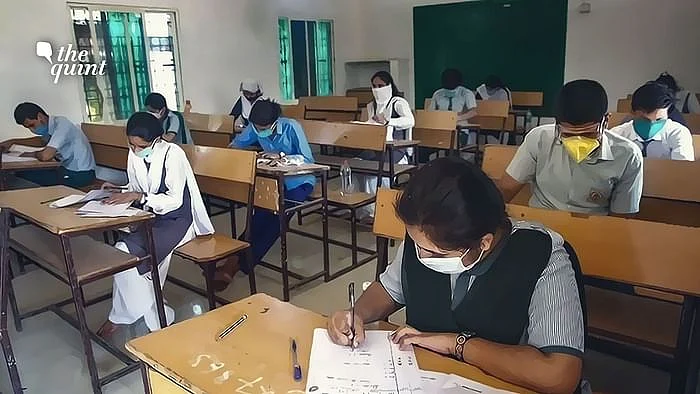The COVID-19 pandemic has irrevocably changed all our lives since 2020. Among those whose lives have gone topsy-turvy are students — from school to university-level. Schools and colleges had to close, exams were not conducted on time due to the rise in COVID cases, and the academic sessions for schools, universities and other professional courses started lat — due to all this, students could not study properly. Most of the learning switched to online mode; suddenly, the lives of students were disrupted and filled with uncertainty.
Students who were to appear for board exams, entrances and other higher-level exams are further distressed in 2021, with no clarity about the upcoming exams due to a sudden rise in COVID cases. The government must step in and find out alternatives to in-person examinations at the earliest.
The government must also frame uniform guidelines for this academic year in advance, for assessment, so that students do not face any problems next year during exams, if COVID continues unabated.
Many outgoing students who were looking forward to job interviews and placements in 2021 are in a predicament now, and are staring at a less-than-bright future in many cases.
Communication Gaps, Inequality In Education Access
Students in rural areas have largely not been able to access online classes due to non-availability of technology and internet access. In urban areas too, owing to financial constraints, many students were not able to meet the necessary requirements for effective online learning. Due to poor network, there was inadequate communication between the teachers and students. Clear communication is one of the key factors for a healthy educational environment. Due to limited information on online learning, technical glitches, challenges of a virtual classroom, weak network connections, new conceptual online classes, and lack of concentration in online classes, teachers are finding it difficult to adopt technological advancement — teaching aids such as electronic boards, class presentations, etc are not being effectively used.
The communication gap between teachers and students has led to a delay in responding to online tasks and assignments.Students from less privileged backgrounds have experienced disproportionate negative impacts due to the COVID-19 outbreak.
Reduction in family income, limited access to digital resources, and the high cost of internet connectivity have disrupted the academic lives of these students. This has caused a lot of mental stress among students.
Mental Stress & Long-Lasting Impact Of Disrupted Education Amid COVID
Due to psychological stress, students can no longer concentrate as before. The future has become uncertain along with the closure of educational institutions, delays in exams.
Planning for further studies is a challenging and difficult task for students at this point, and has led to much anxiety and even emotional instability within families.
The shutting down of schools and the decision to shift traditional classrooms to digital platforms is not only increasing learning inequality among children, but also pushing a large number of children out of school due to the digital divide. Other than learning, the absence of schooling would also have a long-lasting effect on the health and nutrition of children, as mid-day meal services have also been affected due to the COVID-induced circumstances.
Higher education has faced disruptions too due to delays in results, competitive exams and the entire admissions process.
Some students were lucky enough and had the necessary resources to start their degrees in December 2020, but a large chunk of students have had to take a gap year.
As schools and colleges are closed, the students who were more involved in physical activities like sports, are now almost at total rest, affecting their mental and physical wellbeing in many ways including poor eating habits, disturbed sleep cycles and other issues related to a stagnant lifestyle.
COVID 2nd Wave: What Our Students Need From Us Right Now
The COVID-19 pandemic has forced many children out of school — especially the urban and rural poor — causing many children to be relocated to farms and factories to work, thereby worsening the child labour problem.
Neither colleges nor students were prepared for prolonged campus closure. Both face lots of challenges going forward.
Due to subsequent COVID-19 spikes, many institutions have already been forced to lockdown for a second time. Many state governments have again shut down schools and colleges due to the second COVID wave.
The next few months are going to be critical to ensure that the impact on students is minimised.
Mental health experts worry about the psychological toll on a younger generation that was already experiencing soaring rates of depression, anxiety and suicide before the COVID pandemic.
We have to provide emotional support to students and educate them on coping mechanisms and healing, and how to push through hardship and bounce back — thus, emerging stronger.
The COVID pandemic has exposed the gaps in the education system which need to be addressed to deal with such unprecedented situations in the future, without compromising on quality and access to education for all.
(Anubha Shrivastava Sahai is the President, India-Wide Parents Association. She tweets @anubha1812. This is an opinion piece. The views expressed above are the author’s own. The Quint neither endorses nor is responsible for them.)
